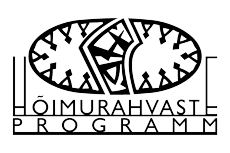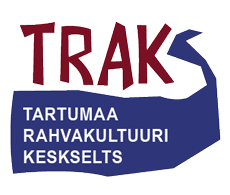The lyrics are presented as close to the original versions as possible, with minor corrections. The changes are mainly grammatical and the aim is to make the word forms more similar to local dialects. The characteristics of runo song language and the use of archaic forms are taken into account. For example, the vowels are separated with an apostrophe if they divide between two “song syllables”, taking into account the historical form of the word. If the suffices of the allative case and the ablative case have been exchanged in the original text (cf Peegel 1974: 56), this is not corrected.
The Votian texts collected around Kattila in the 19th century have been edited by Enn Ernits and Heinike Heinsoo. The texts from Paul Ariste’s publications, originating from Vaipoole, have been edited by Heinike Heinsoo. In the Kattila texts, the p, t and s in the end of words have been standardized to b, d and z like in the written language versions of Vaipoole songs – since the voicedness of word-final plosives and sibilants depends on the next sound, it is not necessary to show it in writing; the only exception is the t in the shortened case suffices: vasaroit. Characteristically to Vaipoole dialect, the long word-final vowels have been replaced with short ones in the texts collected from this area. The palatalization is marked only in the end of consonant pairs, in pronunciation both consonants are palatalized (for example vadd´a is pronunciated vad´d´a). Of the Vaipoole texts, the written language versions compatible with the transcription principles of the dictionary “Vadja keele sõnaraamat“ (2013) and the textbook “Vad´d´a sõnakopittõja” (Heinsoo 2015) are also given.
Ingrian texts have been edited by Eva Saar. As a prototype she has used the Ingrian transcription similar to Estonian written language, which has been used by Arvo Laanest (Laanest 1997) in the Hehava dialect dictionary and suits also well for Soikkola dialect (see Saar 2008: 8–10). Differences are in the marking of B, D, G – these are simplified to b, d, g, which are pronounced half-voiced like in Estonian (in the genuine vocabulary b, d, g are voiced only at the end of the syllable if they are followed by a voiced consonant, for example in the words kagla ’neck’, pagla ‘ribbon’, and in recent Russian loans). As characteristic to Ingrian language, the distinction between half-voiced sibilant z and strengthened s has been brought out: z is present between vowels or next to voiced consonant (for example noizen ‘I start, I rise’, koverzin ‘I bended’), in certain forms there is strengthened s in the similar positions (for example noisoo ’starts, rises’). In Ingrian exists the ternary contrast of consonants: three different level of duration is seen for example in words nurkka: nurgan ’corner’ ja tulkaa ‘come’. Estonian native speakers singing Ingrian songs should take into account that palatalization does not occur in this language.
The edition “Kansanlauluja Inkerimaalta” (Asplund 1992) and the transcriptions of the Finnish Literature Society made by Ulla Kauhanen and Kati Lumiaro in 1967 and 2002 have helped in transcribing Ingrian texts from the 1937 recordings. Kati Kallio, Finnish traditional song researcher and an expert of Ingrian singing tradition, gave valuable advice for composing the final versions of the longer song texts from SKVR.
In the source references below the song texts, T shows the origin of the text and M shows the origin of the melody. First, the name of the original singer and her village are given (if known). In writing the village names associated with Votian songs and singers, we have followed the example of the dictionary “Vadja keele sõnaraamat”, and in case of the names of Ingrian places, the work of Arvo Laanest (1986) and Julius Mägiste (1922). The names of the collectors, collecting year, and reference to the book where the text or notes have been published, or reference to archive recording in Estonian Folklore Archives of the Estonian Literary Museum (ERA, Pl; RKM, Mgn II) and The Sound Archives of the Finnish Literature Society (SKSÄ) are given in the brackets.
A shows the data about archive recording, presented in the same system as for the text and melody.
In modern recordings, only the name of the lead singer is given, choir always consists of the singers of “Väike Hellero”, the composition of the choir varies slightly between songs.
Literature references are given on a separate page. References have not been brought out in song comments, these references are in a separate list on the page.





